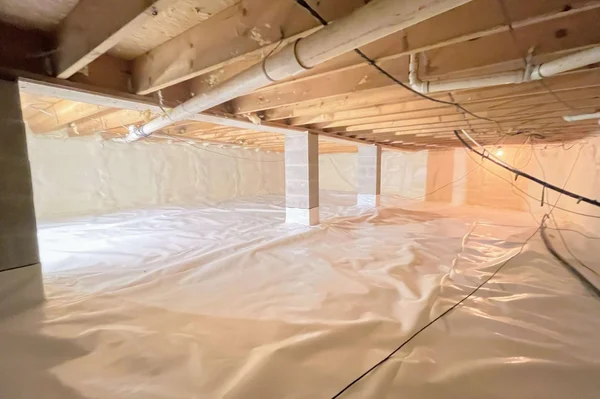
Crawl spaces are out of sight and rarely visited. However, rodents can gain access to your living through your crawl space. The cool nights and seasonal changes in Blend can drive rodents indoors. Thus, protecting your crawl space is important to keep your home free of these pests.
Rats and mice love crawl spaces due to their location and the availability of insulation or debris that they can use for their nests. They will chew wires, damage insulation, or make their way into other parts of your home once they have settled in. Bend pest control professionals address issues related to crawl space when dealing with rodent infestations.
Crawl spaces often provide shelter, warmth, and easy access to the rest of the house. Rats and mice can take advantage of gaps, vents, or openings in the foundation to slip through. Crawl spaces become especially appealing as a warm and protected hideout in Bend’s colder months. Thankfully, you can rodent-proof your home with the following measures:
Inspect for Openings
Walk around your home and look closely at the foundation. Pay attention to gaps between siding and concrete or broken or missing vent screens. Rodents usually get inside through these openings. Also, look for openings around pipes, cables, and utility lines. A small hole can be enough for a determined rodent. Make a note of anything that looks worn, loose, or chewed.
Seal Gaps and Cracks
Steel wool combined with caulk works well for small holes. Rodents cannot chew through the metal. Consider using heavy-duty materials like hardware cloth or metal flashing for larger gaps or damaged areas. Cover vent openings with tight-fitting screens and secure them well. You want to create a physical barrier that rodents can’t chew or push their way through.
Clean and Declutter the Crawl Space
Rodents usually nest in messy, cluttered crawl spaces. Any leftover building materials, old insulation, or stored items in the crawl space must be removed. The cleaner and drier the space, the less attractive it is to pests.
Additionally, look for signs of past rodent activity such as droppings, shredded insulation, or chewed materials. Clean the area carefully and sanitize the space to remove scent trails that may attract more rodents.
Control Moisture
Many crawl spaces in Bend suffer from dampness or poor drainage, making them a target for moisture-loving rodents. Use a vapor barrier on the floor of the crawl space to keep it dry. This also helps reduce mold, mildew, and other pests.
Your gutters and downspouts should be channeling water away from your foundation. Consider adding a dehumidifier or improving ventilation to keep things dry if your crawl space stays damp.
Keep the Perimeter Clear
Your yard can either help or hurt your rodent-proofing efforts. Make it less attractive to rodents by trimming back bushes, tree limbs, and tall grass from around your home. Don’t stack firewood, mulch, or debris close to the foundation as these provide hiding spots and easy access points for rodents.
Also, check for animal burrows or signs of digging near the crawl space vents or under the porch. Catching early signs of rodent activity outside can prevent a more serious issue inside.
Use Traps and Monitoring Tools
Placing traps in and around your crawl space may make sense if you have a history of rodents. But it can also be a precautionary measure. Traps can catch any rodents that manage to infiltrate your home. Motion-sensor cameras or rodent monitoring blocks are also helpful. These tools can alert you to movement or chewing activity without having to crawl in and out regularly.
Get Help From Local Experts
Crawl spaces are often challenging to handle on your own, especially if you have an active infestation. Many Bend homeowners turn to Pointe Pest Control for help with rat control. Their team, under the leadership of CEO Jacob Borg, knows how rodents behave. They use this knowledge to seal off your crawl space, safely remove pests, and prevent them from coming back.
